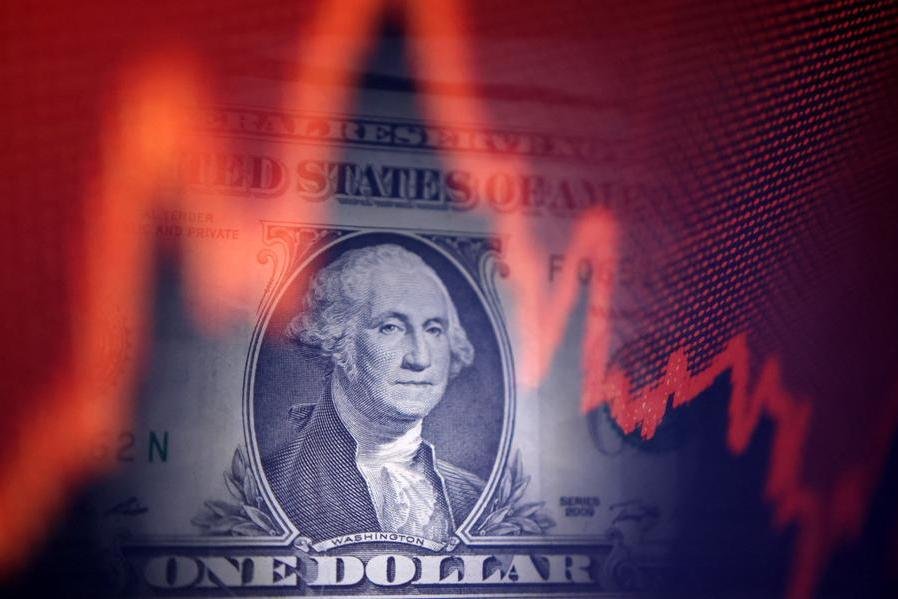(The opinions expressed here are those of the author, a columnist for Reuters.)
ORLANDO, Florida – With the dollar poised for its worst first-half performance since 1986, the selling may seem to be coming from everyone, everywhere, across every asset class.
To some extent, that’s true. Investors globally appear to be gradually reducing their exposure to dollar-denominated assets, driving the greenback down to its lowest level against a basket of major currencies in three and a half years. But some pressure points are greater than others.
Unsurprisingly, non-U.S. investors are responsible for the bulk of the selling, with equity-related selling pressure concentrated among European investors and fixed income-based selling mostly coming from Asia.
According to Bank of America’s FX strategy team, European “real money” investors – institutions like pension funds and insurance companies – are the main drivers of the dollar’s selloff in the second quarter, slashing their dollar positioning to the lowest since 2022 in a matter of weeks.
But the story might not be so straightforward. While European investors increasing their dollar hedge ratios have garnered much attention recently, research shows that most of the dollar’s average daily declines in the last few months have come in Asian trading hours, suggesting Asian holders of U.S. bonds may also be increasing their dollar hedges.
So which is the bigger drag on the dollar: equity-led geographic diversification or fixed income selling? And where is the selling mostly coming from: Europe or Asia?
OVER-EXPOSED
At first glance, one might pin the blame on equities, as foreign holdings of U.S. stocks are larger than their U.S. debt assets in nominal terms. But percentage-wise, overseas investors’ footprint in the U.S. fixed income markets is larger.
Foreigners own just over $31 trillion of U.S. securities, with $17.6 trillion in equities and $13.6 trillion of bond holdings, according to the Bank for International Settlements. That represents around 18% of the overall U.S. equity market, compared with 21% of the U.S. agency and corporate bond market and a third of the U.S. Treasury market.
Analysts at UBS estimate that euro zone investors account for 25% of the foreign-owned U.S. equity universe, having loaded up on U.S. stocks in recent years. This makes the dollar particularly vulnerable if Wall Street continues to underperform European and Asian markets, they reckon.
Breaking down these exposures even further, they find that foreign investors’ total net unhedged dollar asset exposure is $23.5 trillion. Of this, investors in G10 countries hold $13.4 trillion, with $9.3 trillion in equities and $4.1 trillion in fixed income.
These are vast numbers, and it wouldn’t require much of a switch to trigger large cross-border flows.
UBS calculates that a hypothetical 5% reduction in G10 countries’ dollar position would equate to around $670 billion of dollar selling. Most G10 countries, of course, are in Europe, so the bulk of that selling would come from there.
PRICE-SENSITIVE
While European investors have mostly been unloading equities thus far, it’s good to remember that the region’s investors significantly increased their exposure to U.S. bonds over the last decade too, particularly the 2014-2022 years when the European Central Bank’s main interest rates were negative.
UBS analysts estimate euro zone investors bought $3.4 trillion in foreign debt since 2014. So even a modest rebalancing away from U.S. bonds could have a meaningful impact on prices.
Ultimately though, Asian investors still appear to wield more muscle in the U.S. bond market, owning around a third of foreign-held U.S. Treasuries and agency debt. And that figure is probably much higher given that euro zone, Caribbean and UK holdings include assets held on behalf of Asian countries, notably China.
Up until this point, there has been no wholesale dumping of U.S. assets, and neither is there likely to be. But it is notable that U.S. assets are increasingly being held by private sector investors, who have replaced central banks as the main buyers of U.S. assets in recent years.
The private sector is typically considered more price-sensitive than the official sector. That means these positions may prove less sticky than in the past, especially if the idea of waning “U.S. exceptionalism” truly takes root.
(The opinions expressed here are those of the author, a columnist for Reuters)
Enjoying this column? Check out Reuters Open Interest (ROI), your essential new source for global financial commentary. ROI delivers thought-provoking, data-driven analysis. Markets are moving faster than ever. ROI can help you keep up. Follow ROI on LinkedIn and X.
(By Jamie McGeever; Editing by Bernadette Baum)







